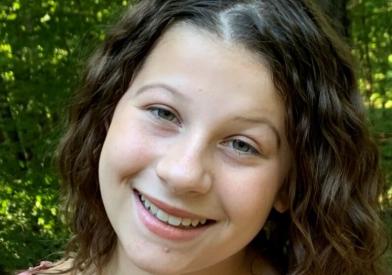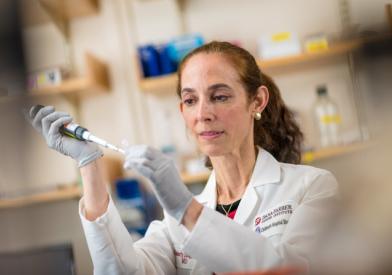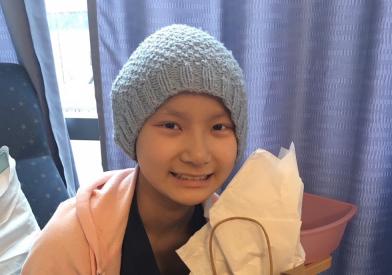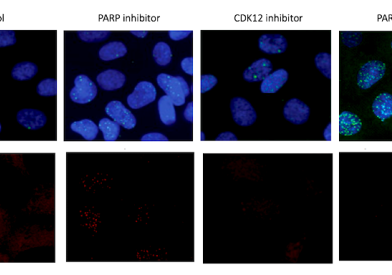What Are Soft Tissue Sarcomas?
Soft tissue sarcomas are cancerous tumors that begin in the tissues that connect, support, or surround the body's organs and structures. These soft tissues include muscle, tendon, synovial tissue (around joints), fat, blood vessels, lymph vessels, and nerves. While soft tissue sarcomas can develop almost anywhere in the body, they are most common in children's arms, legs, chest, and abdomen.
- Soft tissue sarcomas are rare, comprising less than 1 percent of all new cancer cases per year and just 3 percent of all childhood tumors.
- In the United States, doctors diagnose about 900 children and adolescents with soft tissue sarcomas each year.
- Doctors are not sure what causes soft tissue sarcomas to emerge, but a genetic link is suspected. Some inherited diseases, such as Li-Fraumeni syndrome and neurofibromatosis type 1, increase the risk of developing a soft tissue sarcoma.
- Soft tissue sarcoma affects the elastic and easily moved tissue, which means that a tumor may exist for a long time before doctors discover it. During this time, it may grow larger and push aside the surrounding tissue.
At Dana-Farber/Boston Children's Cancer and Blood Disorders Center, we treat children with soft tissue sarcomas in our Bone and Soft Tissue Tumors Program. Our pediatric cancer specialists offer unparalleled expertise in diagnosing and treating soft tissue sarcomas in children.
Types of Childhood Soft Tissue Sarcomas
We treat many different types of soft tissue sarcomas, including:
- Alveolar soft part sarcoma is a tumor that starts in connective tissue, including fat, muscle, and nerve.
- Angiosarcoma is a type of cancer that begins in the cells that line the blood vessels or lymph vessels.
- Desmoid tumor is also called aggressive fibromytosis, a tumor that forms in fibrous tissue that makes up tendons and ligaments.
- Epithelioid hemangioendothelioma is a rare vascular tumor that sometimes behaves like a cancer but in most cases is benign.
- Ewing sarcoma is a cancer that grows in bone or soft tissue around bone.
- Fibrosarcoma is a tumor that originates in connective tissue at the end of bones in the arms or legs and spreads to surrounding soft tissue.
- Hemangiopericytoma originates in the walls of capillaries, the tiny blood vessels located within the tissues of the body.
- Inflammatory myofibroblastic tumor is a soft tissue mass that can grow in any part of the body.
- Juvenile nasopharyngeal angiofibroma (JNA) is a benign tumor that appears in the nasal cavity.
- Kaposiform hemangioendothelioma (KHE) is a rare benign tumor caused by the abnormal growth of blood vessels.
- Leiomyosarcoma is a tumor that usually occurs in the gastrointestinal tract, which includes the stomach, small intestines, colon, appendix, rectum, and anus.
- Liposarcoma is a tumor that develops in fat tissue, most often in the abdominal cavity.
- Malignant fibrous histiocytoma (MFH) is a painless mass that most often turns up in the extremities, although it can occur anywhere in the body.
- Peripheral nerve sheath tumor (neurofibrosarcoma) is a tumor that forms in cells that surround nerves.
- Rhabdomyosarcoma is the most common soft tissue sarcoma; it begins in skeletal muscles.
- Synovial sarcoma is a malignant tumor in soft tissues around joints, most commonly the knee.
- Undifferentiated or spindle cell sarcoma involves the connective tissue; the cells are spindle-shaped when examined under a microscope.
Causes and Symptoms of Childhood Soft Tissue Sarcomas
In most cases, doctors don't know what causes soft tissue sarcomas. However, many suspect that the origin is genetic.
Some inherited diseases, such as Li-Fraumeni syndrome or neurofibromatosis, are associated with an increased risk of developing soft tissue sarcomas. For some soft tissue tumors, there seems to an association with an Epstein-Barr virus infection.
The most common symptoms of soft tissue sarcomas include:
- Painless swelling or a lump
- Pain or soreness caused by compressed nerves or muscles
- Limping or other difficulty using the legs and feet
How We Diagnose Childhood Soft Tissue Sarcomas
The first step in treating your child is an accurate diagnosis. Your child's physician may order several different tests, including advanced imaging studies, bone scan, and biopsy to confirm soft tissue sarcoma.
After completing all necessary diagnostic tests, our experts meet to review and discuss what they have learned about your child's condition. Then we will meet with you and your family to discuss the results and outline the best possible treatment options.
How We Treat Childhood Soft Tissue Sarcomas
Soft tissue sarcoma treatment typically combines surgery, chemotherapy, and radiation. Currently, soft tissue sarcoma treatment is likely to include:
- Surgery: Surgery is often the first step. It helps doctors form a complete diagnosis of the tumor type and provide information on the disease stage. If your child's leg or arm is affected, your child may need one of the following surgeries:
- Limb-salvage surgery: The surgeon removes the tumor and healthy tissue surrounding the tumor while maintaining the function of the affected limb.
- Rotationplasty: This is a partial amputation that preserves the cancer-free lower leg, attaches it to the thighbone, and uses the ankle as a knee joint.
- Amputation: While it is only necessary in rare cases, a child may need amputation surgery if the tumor involves the nerves and blood vessels.
- Radiation therapy: Radiation therapy uses high-energy rays from a specialized machine to damage or destroy abnormal cells. Our doctors use precisely targeted and dosed radiation to eliminate cancer cells left behind after your child's surgery.
-
Chemotherapy: These medicines can help stop the abnormal cell growth throughout the body. Chemotherapy is systemic treatment, meaning it is introduced to the bloodstream and travels throughout the body to destroy or slow targeted cells' growth. Different groups of chemotherapy drugs work in different ways. Patients can receive chemotherapy in various ways, including orally or intravenously.
While chemotherapy can be quite effective in treating certain cancers, the agents don't completely differentiate normal healthy cells from abnormal cells. Because of this, your child may experience adverse side effects during treatment.
- Precision Cancer Medicine: Dana-Farber/Boston Children's clinician/researchers are utilizing precision medicine that targets the specific mutations within soft tissue sarcomas. Targeted therapies are playing a larger role in the successful treatment of childhood soft tissue sarcomas.
After treatment, children receive long-term care through our pediatric cancer survivorship programs. Our survivorship specialists provide services such as genetic counseling, psychosocial counseling, and nutrition counseling.





